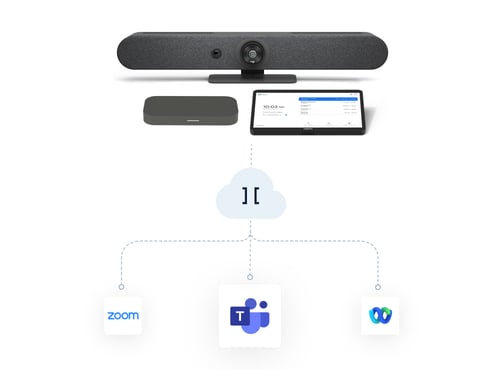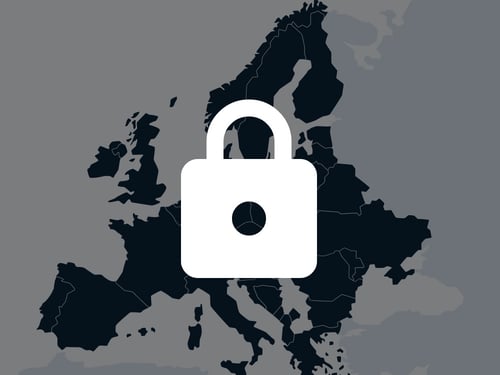Pexip video allows PwC Australia to connect people in Australia and worldwide – and there are exciting plans for where to take meetings next.
Supporting staff to work flexibly at PwC Australia is more than simply providing hot desks.
Today, the professional services giant has about 9,500 employees across nine Australian city offices. And it sees high-quality video conferencing as vital to improving collaboration – both nationally and across 156 countries of operation.
“It’s all about enjoying a better connectivity experience with clients,” says Lisa Phillips from PwC Australia’s Digital Technology Services team.
“Being able to observe the nuances when you’re having a conversation over video is very different to phone or audio. When you can’t be in the same room as someone, you get so much more benefit from having a video connection.”
Another big benefit – not least for the environment – is reducing its executives’ need to fly worldwide.
The challenge of managing different platforms
Video conferencing has been a feature of life at PwC Australia for about ten years. Many employees were issued initially with Cisco video phones on their desks. Over the years, the staff switched to accessing video over laptops and smartphones using a variety of Cisco Webex and Google applications. Google Chromebox also enabled numerous physical video conferencing rooms.
But people often got frustrated when they booked a room, only to discover it was incompatibly set up with whoever they needed to speak with.
Phillips’s role as Unified Comms and Audio-Visual Leader, based in Sydney, is to support PwC Australia employees nationwide to interact over video internally or externally on a daily basis. “We should be platform agnostic,” she says. “It doesn’t matter what platform we’re connecting on, as long as everyone can join.”
What Pexip offered PwC Australia
“The problem we reached out to Pexip to solve was the interoperability between different technologies within our environment,” Phillips explains.
“We wanted to streamline the process for staff and clients – as well as to fully utilize the fantastic technology options across our offices.”
“We were searching for an underlying platform to bring it together.”
A carefully tailored solution
PwC Australia chose Pexip as its unifying video conferencing platform in 2018. It researched the market and consulted globally to identify video meeting best practices – then recognized its Australian offices were more or less already leading the way.
Phillips explains that Pexip was seen as the best, most cost-effective solution to PwC Australia’s interoperability challenges. “Pexip had a great reputation as a market leader integrating the Cisco video conferencing and Google technologies, which were the primary tools in our environment.”
Workshops were held with Pexip’s local design team. After analyzing potential benefits and opportunities, PwC Australia invested in a video conferencing cloud hosted on-premises rather than Pexip’s fully managed cloud. “We were able to build the solution in our cloud environment and have access to a lot more reporting and monitoring,” Phillips says.
“Like a lot of enterprise organizations, we have stringent security requirements. So yes, there were a few design choices; I wouldn’t say challenges or more decisions. But nothing we weren’t able to solve.”
How things are working out
Since implementing Pexip as a bridge solution, PwC Australia has been able to better leverage its technology already in place. Employees now enjoy a seamless meeting experience on any device, even if they still use Cisco or Google Meet platforms. Staff at some PwC Australia office locations with older technology can easily join previously off-limits meetings.
PwC Australia has recently migrated its physical room video conferencing systems to Pexip, further simplifying its IT. When the pandemic hit, PwC Australia already had a mobile workforce, allowing it to adapt as face-to-face client meetings became impossible quickly. Nevertheless, it was pleased that its video capability scaled up to cater to unprecedented demand. The main challenges included occasional network carrier congestion with Optus and Telstra.
Where to next?
Phillips is keen to continue improving interoperability across different platforms as a more hybrid style of work resumes. The goal, she says, is to “level the playing field” so meeting participants can enjoy the same high quality of collaboration, no matter their location.
PwC Australia’s vision for video meetings in the future is all about “seamless experience and connection.” Where people can conveniently hop onto a video chat, whether at home, a café, on the train, or safely in their car, without even needing to perform a single touch.
Calendar integration applications backed by artificial intelligence are being developed that automatically schedule and invite the right people to meetings. Physical rooms are booked, if necessary, and participants are sent remote access links.
“I’m interested in the different technology platforms that can offer an immersive experience,” Phillips says. “And also, deepening the analytics around what happens in meetings so we can make informed decisions about our technology requirements based on that.”
“We’ve had people work from home and join meetings remotely at PwC Australia for years. It’s now time to bring those attendees into an environment where it truly feels like everyone is in the same room.”
Modernize your Meeting Infrastructure for Today's Workforce
Learn how to get the most from your existing video hardware and platforms
while reducing ongoing costs
- Enterprise
- Meet & collaborate securely
- Digital transformation
- Connect








